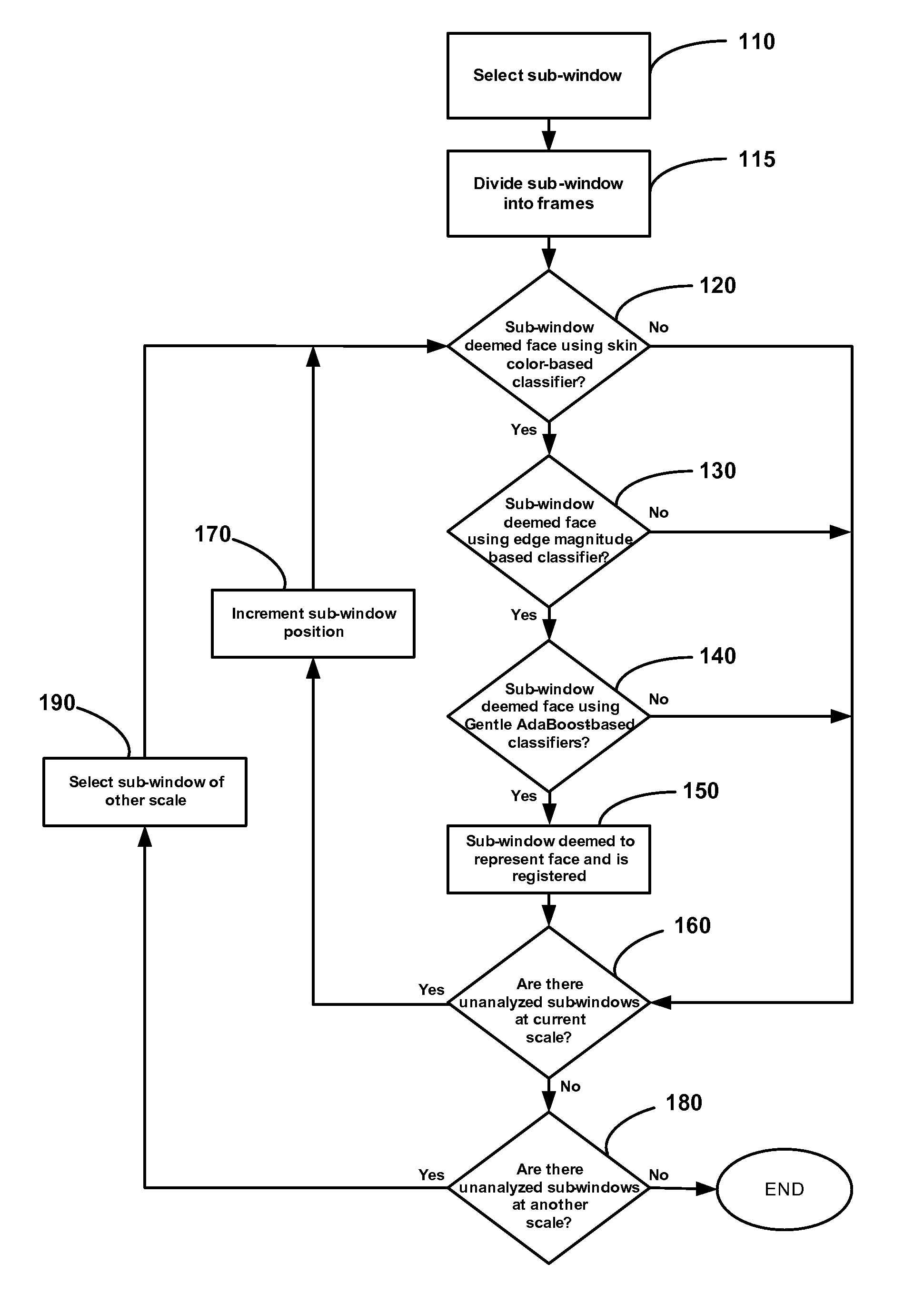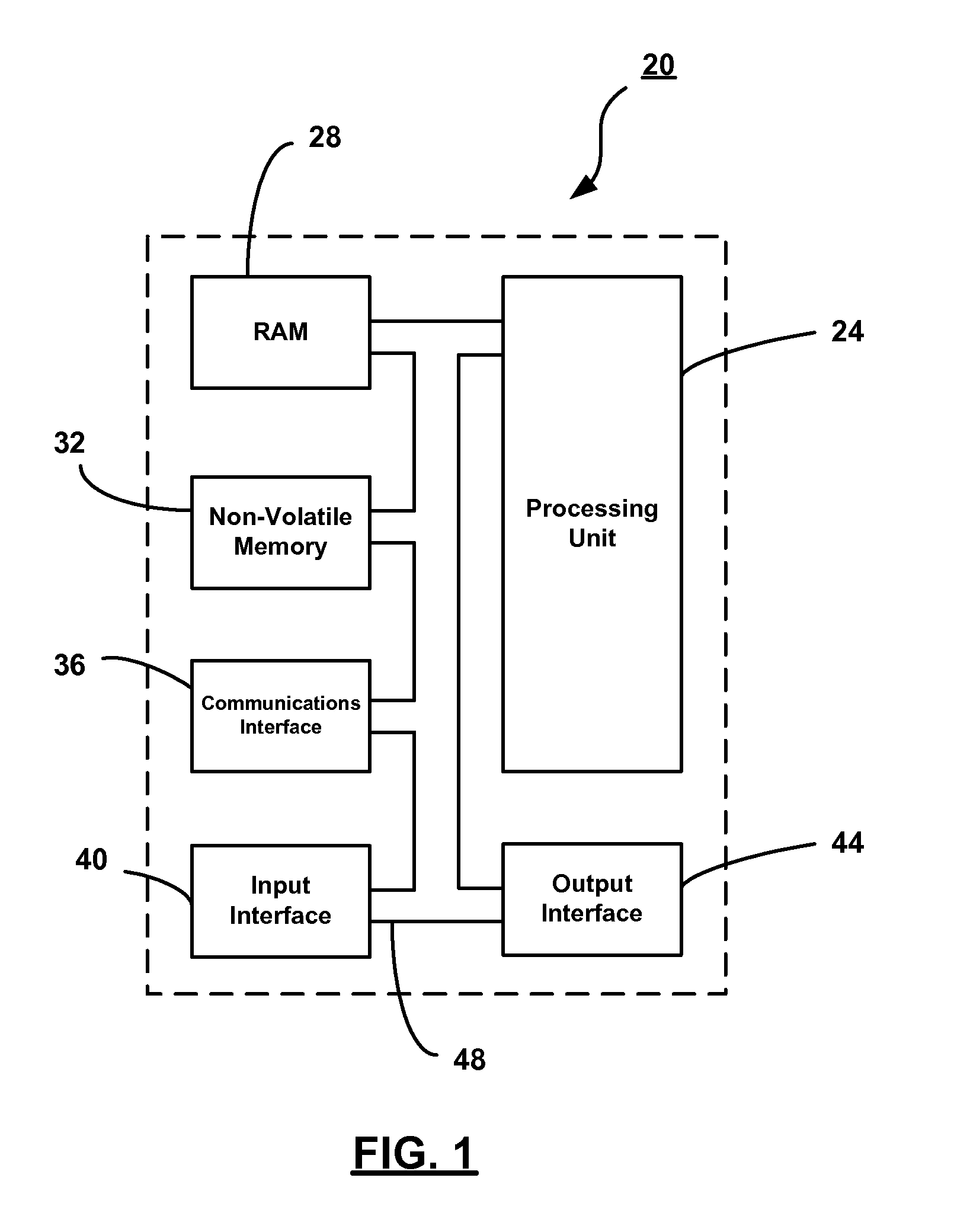Method And Apparatus For Detecting Faces In Digital Images
a technology for digital images and faces, applied in the field of image processing, can solve the problems of difficult recognition of faces, large variance between faces, and high complexity of the approaches used to detect faces in images, and achieve the effects of reducing processing requirements and time, reducing computational costs, and fast approach to face detection
- Summary
- Abstract
- Description
- Claims
- Application Information
AI Technical Summary
Benefits of technology
Problems solved by technology
Method used
Image
Examples
Embodiment Construction
[0060]In the following description, an embodiment of a method, apparatus and computer readable medium embodying a computer program for detecting faces in a digital image is provided. During the method, a number of sub-windows of different sizes and locations in an image are analyzed. In some cases, only a set of sample areas within the sub-windows are analyzed, thereby reducing the computational costs (that is, processing power and time). For each sub-window, the following classifiers are determined in a set of cascading stages to detect whether the sub-window includes a face: a skin-color-based classier, an edge magnitude-based classifier and a Gentle AdaBoost-based classifier. The first stage is computationally fast, or “cheap”, and the processing requirements of each subsequent stage of tests increase. If, at any stage, it is determined that it is likely that the sub-window does not represent a face, analysis of the sub-window terminates so that analysis of the next sub-window ca...
PUM
 Login to View More
Login to View More Abstract
Description
Claims
Application Information
 Login to View More
Login to View More - R&D
- Intellectual Property
- Life Sciences
- Materials
- Tech Scout
- Unparalleled Data Quality
- Higher Quality Content
- 60% Fewer Hallucinations
Browse by: Latest US Patents, China's latest patents, Technical Efficacy Thesaurus, Application Domain, Technology Topic, Popular Technical Reports.
© 2025 PatSnap. All rights reserved.Legal|Privacy policy|Modern Slavery Act Transparency Statement|Sitemap|About US| Contact US: help@patsnap.com



